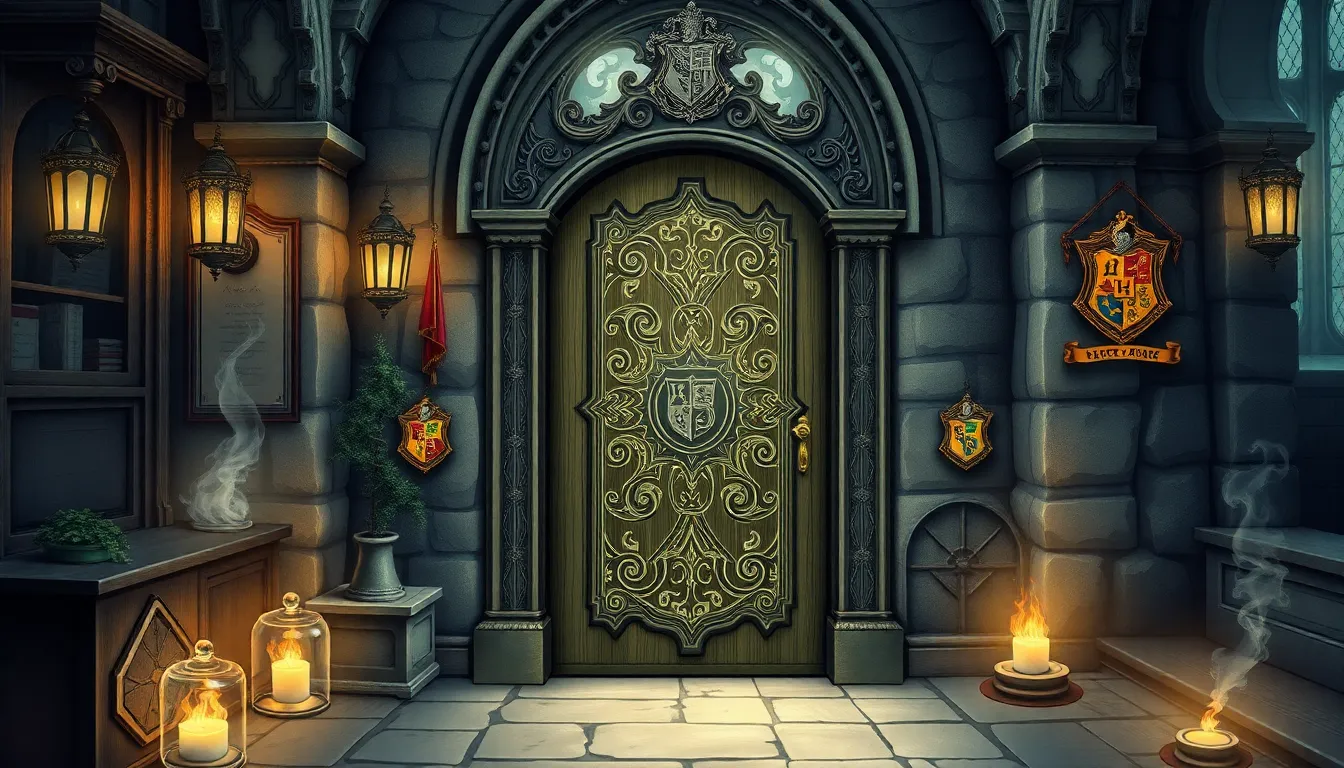Table of Contents
ToggleIn the magical world of Hogwarts Legacy, players often find themselves scratching their heads over tricky door puzzles. These enigmas can turn even the most seasoned witches and wizards into baffled Muggles. But fear not! With a sprinkle of guidance, those confounding locks will swing open faster than a broomstick in a Quidditch match.
Overview of Hogwarts Legacy Door Puzzles
Hogwarts Legacy features various door puzzles that players must solve throughout their adventure. Each puzzle typically requires keen observation and logical deduction, making them a central gameplay element. Engaging with door puzzles provides unique challenges, often leading to hidden treasures or new areas.
Players encounter different types of puzzles that vary in complexity. Simple puzzles might involve aligning symbols or matching patterns. More complex ones can require specific spells or items to unlock doors. Knowledge of the Hogwarts universe enhances the solving experience, as clues often reference lore or magical concepts.
Hints within the environment help guide players toward solutions. These include visual clues, sound effects, or even dialogue from NPCs. Attention to detail proves crucial since players might overlook essential elements. Utilizing spells effectively can unlock doors and reveal hidden paths.
Timing also plays a role in solving certain puzzles. Players may face time limits or require sequential actions to progress. In challenging puzzles, patience and trial-and-error often yield solutions, encouraging creativity.
Collaborative play can enhance puzzle-solving as well. Teaming up with friends allows for brainstorming and different perspectives on challenges. Sharing tips and strategies across the community helps players develop skills in tackling various puzzle types.
Door puzzles in Hogwarts Legacy enhance gameplay significantly. With a blend of observation, spellcasting, and teamwork, players can overcome these obstacles to enjoy a richer narrative experience.
Common Types of Door Puzzles


Door puzzles in Hogwarts Legacy vary in design and complexity, each requiring distinct strategies to solve them. Understanding these common types helps players approach them with confidence.
Symbol Matching Puzzles
Symbol matching puzzles consist of aligning various symbols found on the door. Players must identify the correct symbols and replicate the given pattern. Success hinges on keen observation skills as visual clues scattered around can aid in finding the right combinations. Symbols often relate to Hogwarts lore, enhancing engagement. An example includes a door featuring house crests that require players to match the crests of Gryffindor and Slytherin. Solutions might necessitate a specific spell or interaction with nearby objects.
Sequence Puzzles
Sequence puzzles present challenges involving a particular order or sequence. Players must activate a series of buttons or levers in the proper sequence to unlock the door. Timing plays a crucial role, as incorrect orders can reset the puzzle. For instance, activating three levers corresponding to different colors must occur in a specified order. Players often discover hints through environmental clues or dialogue from NPCs. Leveraging these hints can lead to successful solutions, allowing players to progress further in the game.
Solutions for Specific Door Puzzles
Finding solutions to door puzzles requires a mix of observation, spells, and clever thinking. Below are detailed solutions for specific door puzzles players encounter in Hogwarts Legacy.
Puzzle 1: The Enchanted Library Door
To unlock the Enchanted Library Door, players must align five specific symbols on its interface. Each symbol correlates with notable characters from the Hogwarts lore. Players can identify the correct symbols by examining nearby books and notes, which provide hints about their placement. Activation requires using the Revelio spell to reveal hidden clues around the library area. Aligning the symbols correctly will grant access to the magical knowledge within.
Puzzle 2: The Abandoned Wing Entrance
Solving the Abandoned Wing Entrance puzzle entails activating a sequence of three levers. Each lever activates different sections of the door, and timing is key to their successful activation. Players need to observe the glowing indicators before pulling the levers. Delays can reset the puzzle, forcing players to restart the sequence. Close attention to environmental audio cues, such as sounds from the levers, aids in determining the correct activation order.
Puzzle 3: The Secret Chamber Door
The Secret Chamber Door challenge demands players to use two spells in tandem. First, players must cast Accio to draw closer a hidden key. Once the key is within reach, it requires a Lumos spell to light the path and reveal the keyhole. The keyhole glows only when the surrounding area is illuminated. After successfully inserting the key, the door creaks open, unveiling the secrets hidden inside the chamber. Exploring thoroughly ensures that players discover all possible treasures inside.
Tips for Solving Door Puzzles
Door puzzles in Hogwarts Legacy require strategic thinking. Players can enhance their problem-solving skills with effective techniques and insights.
Understanding Clues and Symbols
Clues often originate from the game’s lore. Familiarity with character backgrounds and magical elements aids in deciphering symbols. Visual cues, such as light patterns or color schemes, provide hints about alignments. Pay close attention to NPC dialogue; it frequently offers critical information for solving puzzles. The symbols themselves may connect to historical references, making it essential to know Hogwarts’ rich history. Relying on these clues significantly streamlines puzzle-solving efforts.
Utilizing Game Resources
Game resources play a vital role in puzzle resolution. Players can tap into the in-game journal for notes on past puzzles and clues. The Revelio spell reveals hidden elements within the environment, assisting in understanding each puzzle’s mechanics. Friends can form effective teams; collaborating often leads to fresh perspectives and quicker solutions. Players can also access online communities for shared experiences and additional strategies. Taking advantage of these resources enhances confidence and improves puzzle-solving efficiency.


